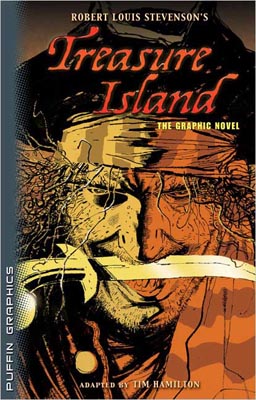This post, by Ben Chabala, originally appeared on his I Speak Comics blog. While the target audience is comic book and graphic novel authors, the subject matter is equally applicable to any literary adaptation of public domain material.
Before I blast off into theoretical realms unknown I think it’d be beneficial to lay a solid foundation for the ideas I’ll be talking about later in the series. First and foremost is the term public domain, which I’ll be throwing around a lot and transmuting into an acronym when I get tried of writing it (PD). If something is in the public domain, and in our case we mean any literature in the PD, it is no longer under any sort of copyright protection.
So anyone that’d like to publish, let’s say The Art of War, can. It being written over 2000 years ago puts it out of reach of even the most dedicated copyright lawyers of the period. That isn’t to say that you can copy modern translations of the work though, present day lawyers will jump all over you for that.
Here’s another example: Let’s say you wanted to write a sequel to Robert Louis Stevenson’s “The Strange Case of Dr. Jekyll and Mr. Hyde,” in comic book form. Well Cole Haddon has done just that in his comic series “The Strange Case of Mr. Hyde.” Seeing as the venerable author died in 1894, at the tragic age of 44, and over 100 years have passed since his demise, his work has fallen out of copyright protection and into the public domain and is now open for adaptation.

The same is true for other such masterful authors as Jane Austen, Jules Verne, Mark Twain, Bram Stoker; the list goes on and on. Granted things get a bit trickier if you want to use works penned by the recently deceased authors of our age, what with copyright laws seemingly being pushed back to infinitum by our legislators, but that’s besides the point. For the third and final time – Public domain literature is free of copyright restrictions and can be adapted and tweaked at will.
So how have comic books creators taken advantage of this phenomenon? Over the past few years I’ve noticed 4 main classifications of adapted PD literature in the graphic storytelling medium: 1) Strict adaptation, 2) tweaked adaptation, 3) untold adventures, and 4) the patchwork universe. Of course there are always exceptions to every rule and these classifications are by no means immutable, but I think they do a good job of setting up the ground work for discussion.
A strict adaptation is when a creator takes a novel and transforms it into a visual tale. Here the writer must pick and choose which words to rip from the prose and feed to the reader while the artist must do their best to make sure that their every picture is worth a few hundred words at least.
This has got to be the most difficult PD adaptation a creator can undertake. They hack and slash the time-tested work of a master, reassemble it into something that communicates the story visually, and then find an artist with the ability to make it look and feel right.
Unfortunately, unless the finished product is something of such surpassing brilliance that it outshines its progenitor, most of these graphic novels tend to be merely an introduction to their meatier original material. Great examples of this type of PD adaptation can be found in the Puffin Graphics collection.
Tweaked adaptation occurs when a creator changes the events of the original work to suit their own creative desires. That probably sounds incredibly vague but for those of you well-versed in mainstream comics think about Marvel’s “What If?” books. There the writer changes an important event in the history of the Marvel U, e.g. General Ross originally becomes the Hulk instead of Banner, and then reveals an all-new aftermath over the course of the comic. It’s still a Hulk story with the same events leading up to the Gamma Bomb explosion, but stars a different Hulk.
Read the rest of the post on I Speak Comics.
